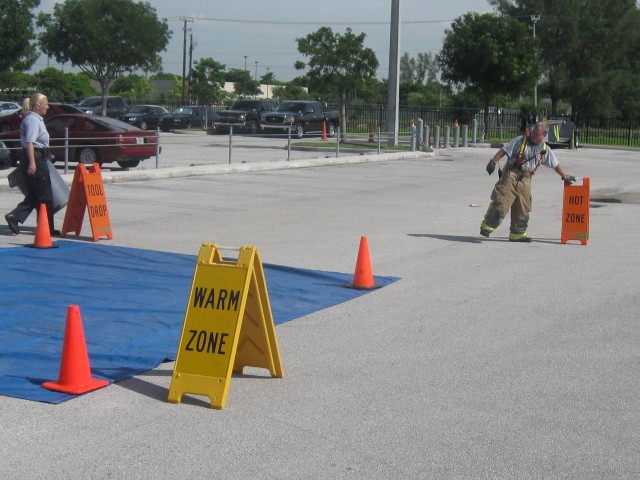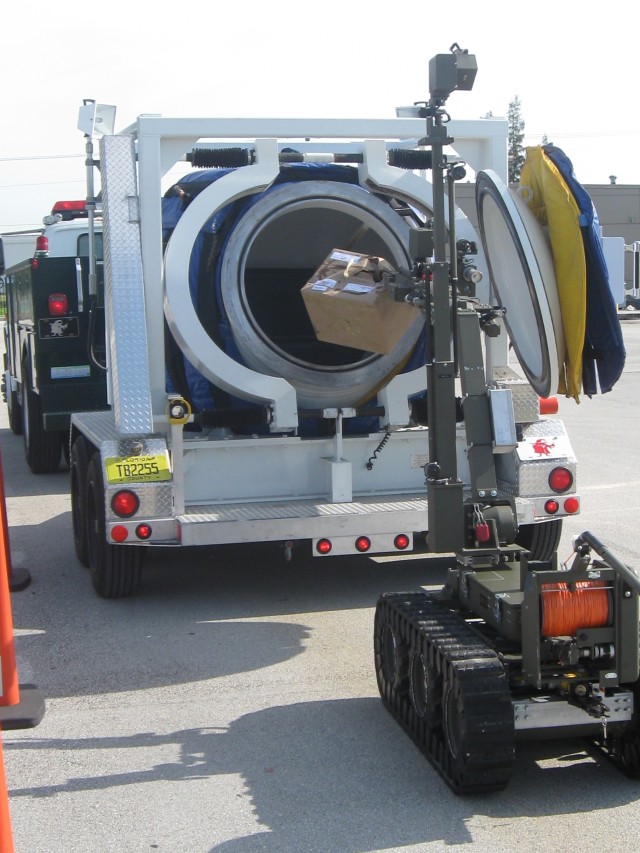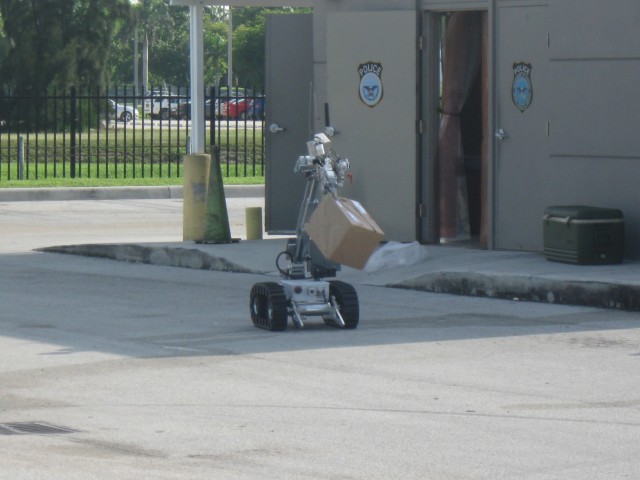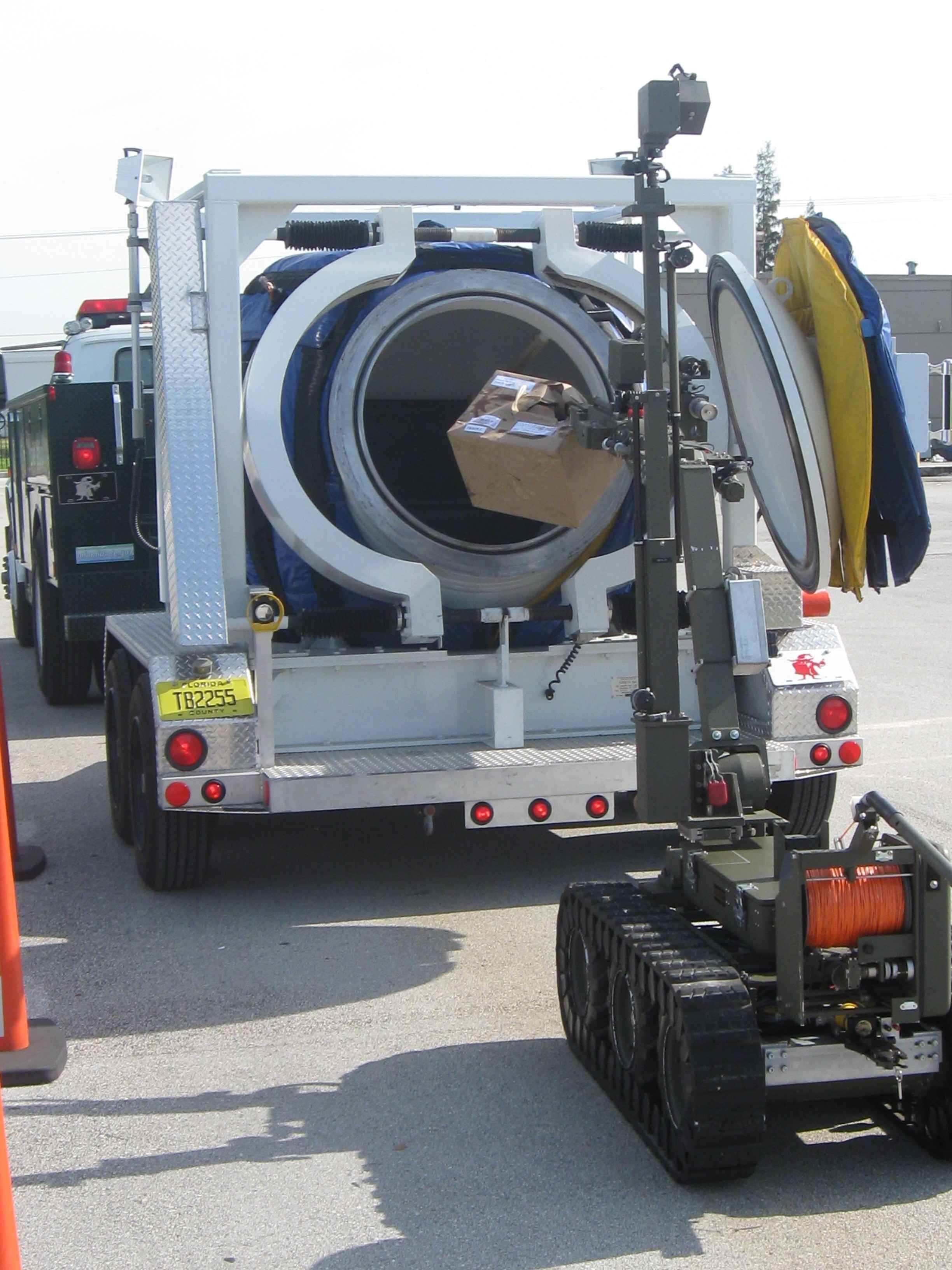Under the glaring summer sun, local police, bomb squads and fire departments practiced their interoperability with each other and the garrison Directorate of Emergency Services recently in a recent exercise that simulated a hazardous material spill and chemical exposure at U.S. Southern Command headquarters.
Exercise objectives were achieved and the response time from all participants was adequate and well executed, according to the garrison anti-terrorism officer, Luis Hernandez.
"This was the first antiterrorism exercise in garrison Miami in four years," he said. "Going through this scenario has helped us re-establish lines of communication and rapport with outside emergency management agencies."
The scenario began with the delivery of a leaky, badly addressed package to USSOUTHCOM headquarters. As the guards began to scan the package, the deliveryman snuck away. Immediately guards notified the local first responders. Scanning then revealed what appeared to be an explosive device.
The military in South Florida is heavily dependent on local civilian agencies to deal with threats of this type. Fortunately, Miami-Dade County is especially well equipped to handle these types of incidents.
Once alerted, police from Doral, and the Miami-Dade police, fire department and bomb squad arrived on the scene, bringing a host of specialized equipment. They included two robots, one large wire-guided and a smaller radio-controlled unit.
Since this was a training exercise, the robots took turns picking up the hazardous package and delivering it to the Total Containment Vessel.
"We are the only police department in the country, so far, with this device," said Lt. Mark Boyd. "There's no way we want to disrupt a potential explosive or set it off, so we contain it and take it away, so we can deal with it in a secure area."
The TCV rests on a trailer pulled by a bomb squad truck. A curious two-inch-thick steel ball with a massive door, it more closely resembles an undersea exploration vehicle. Once the robots placed the package inside, a powerful electric motor closed the door on a still undetermined problem.
The ball is vapor and radiation tight, according to Bomb Squad Officer Sean Klahm, who said he appreciates the electrically operated door of the new device.
"A lot of thought went into this, the previous (containment vessel) had a submarine-style door, and I've closed one while wearing a bomb-suit and HAZMAT gear," he said. The effort used up a bottle of water in the process.
The exercise scenario given to the commanders on the scene was that the guards handling the package had developed blisters, indicating a chemical agent of some kind.
Miami-Dade firefighters suited up while colleagues erected a decontamination station.
Meanwhile, city, county, and Department of Defense police forces kept traffic and onlookers at bay. The firefighters then took samples of the chemical residue for analysis before going through the decontamination procedure.
Though the scenario, conducted under a scorching sun, provided verification of the communications channels and standard operating procedures for his directorate, Hernandez is looking forward to a new scenario, to be held next year.
"We are planning a full scale exercise next year that may include other law enforcement agencies such as the FBI and other emergency response personnel," he said.






Social Sharing